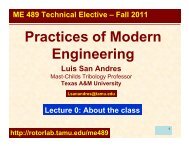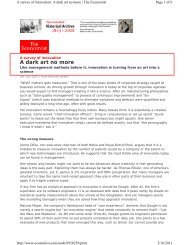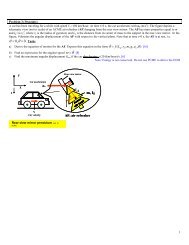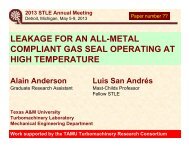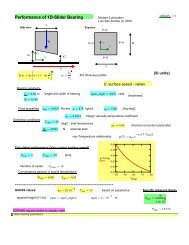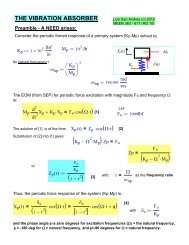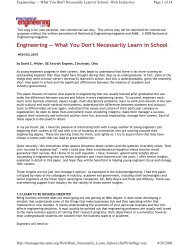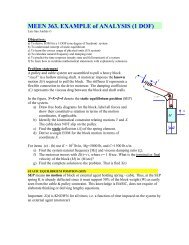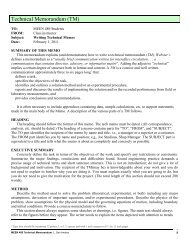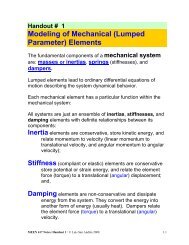TRC-SFD-1-07 - Tribology Group - Texas A&M University
TRC-SFD-1-07 - Tribology Group - Texas A&M University
TRC-SFD-1-07 - Tribology Group - Texas A&M University
Create successful ePaper yourself
Turn your PDF publications into a flip-book with our unique Google optimized e-Paper software.
I IntroductionSqueeze film dampers (<strong>SFD</strong>) aid to reduce synchronous vibration and enhancestability characteristics in rotating machinery. <strong>SFD</strong>s are prone to air ingestion andlubricant cavitation due to typically low inlet feed pressures. These phenomena are morepervasive with increasing vibration amplitudes and operation frequencies. End sealed<strong>SFD</strong>s represent an alternative to reduce or retard the occurrence of air ingestion,commonly present in open or partially sealed <strong>SFD</strong> configurations.Prior <strong>TRC</strong> reports [1-3] describe the design and testing of a <strong>SFD</strong> with an endmechanical seal that replicates a configuration currently in use by one of the <strong>TRC</strong>members. Prior to this work, no experimental data was available on this type of sealed<strong>SFD</strong> configuration. The last (2006) <strong>TRC</strong> report [3] includes flow measurements anddynamic force excitation tests to assess the effectiveness of the end mechanical seal inpreventing air entrapment and to identify the force coefficients, respectively. The testconfiguration includes outlet ports that allow the oil to exit at the sealed end of thedamper. The system parameters are identified in a two step procedure. First, themechanical seal friction force is identified from circular orbits tests prior to pumping oilthrough the damper (i.e. dry system). Second, the squeeze film force coefficients areextracted from the system force coefficients identified from circular orbit tests with oilcirculating through the damper. The test results indicate that the end seal is effective inpreventing air ingestion for the range of frequencies and journal displacement amplitudestested.This report details experiments to identify the forced coefficients of the mechanicallysealed <strong>SFD</strong> operating with closed outlet ports (i.e. no-thru flow). This configuration is ofspecial interest for unmanned aerial vehicles (UAV). A non-linear identificationtechnique is adopted to identify simultaneously the dry friction force and the squeeze filmforce coefficients, thus eliminating the need for additional “dry system” tests. The testresults are compared to prior test results obtained with thru-flow condition. In addition,the report includes experiments to determine the operating conditions (frequency andamplitude of motion) leading to air entrapment. A literature review of prior experimentalwork on <strong>SFD</strong>s relevant to this experimental investigation and non-linear parameteridentification techniques follows.7



